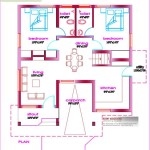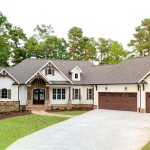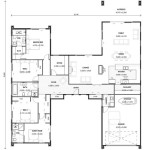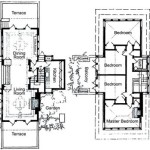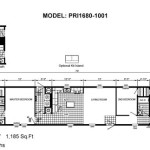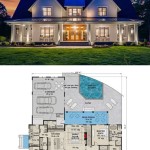20,000 Square Foot Home Plans: A Comprehensive Overview
The concept of a 20,000 square foot home conjures images of opulence and custom design. Structures of this magnitude are typically reserved for individuals or families with substantial resources and specific lifestyle requirements. Planning such a large residence requires meticulous attention to detail, a clear understanding of spatial relationships, and collaboration with experienced architects, engineers, and interior designers. This article provides a comprehensive overview of the considerations involved in planning a 20,000 square foot home, focusing on key aspects of design, functionality, and sustainability.
The sheer scale of a 20,000 square foot home presents unique challenges and opportunities. Unlike smaller residences where compromises are often necessary, these expansive homes allow for the seamless integration of specialized spaces and personalized amenities. However, this freedom also necessitates careful planning to ensure that the home remains functional, aesthetically pleasing, and energy-efficient. A collaborative approach, involving the homeowner and a team of professionals from the outset, is crucial for successfully navigating the complexities of such a project.
Understanding Spatial Requirements and Functional Zones
One of the initial steps in planning a 20,000 square foot home is defining the spatial requirements and functional zones. This involves identifying the specific needs and desires of the homeowner and translating them into a cohesive floor plan. Beyond the standard living areas such as bedrooms, bathrooms, kitchens, and living rooms, these homes often incorporate specialized spaces tailored to unique interests and hobbies. Examples may include home theaters, indoor swimming pools, professional-grade gyms, art studios, libraries, wine cellars, and multiple car garages. Detailing the intended use of each space is paramount in determining its size, layout, and optimal location within the overall floor plan.
Effective zoning is critical for creating a comfortable and functional living environment within a large home. This involves separating public and private areas, as well as creating distinct zones for various activities. Public areas, such as the living room, dining room, and entertainment spaces, should be easily accessible and designed for social interaction. Private areas, such as bedrooms and bathrooms, should be located away from the main flow of traffic to ensure privacy and tranquility. Service areas, such as the kitchen, laundry room, and utility rooms, should be strategically placed to facilitate efficient household operations. Careful consideration should also be given to the flow of movement between different zones, ensuring that the home feels connected yet allows for individual privacy.
Furthermore, the orientation of the home on the building site is crucial for maximizing natural light and ventilation. Architects often utilize advanced simulation tools to analyze the sun's path and prevailing wind patterns to optimize the placement of windows and other openings. This not only enhances the comfort of the living spaces but also reduces the reliance on artificial lighting and air conditioning, contributing to energy efficiency. Strategic landscaping can also play a role in controlling solar heat gain and providing shade during the hottest months.
Architectural Style and Design Considerations
The architectural style of a 20,000 square foot home can range from traditional to contemporary, reflecting the personal preferences of the homeowner and the character of the surrounding environment. Traditional styles, such as Georgian, Tudor, and Mediterranean, often feature elaborate detailing, formal layouts, and a sense of grandeur. Contemporary styles, on the other hand, tend to be more minimalist, characterized by clean lines, open spaces, and an emphasis on natural light. The choice of architectural style should be carefully considered, taking into account the overall aesthetic goals of the project and the desired atmosphere of the home.
Regardless of the chosen architectural style, certain design considerations are particularly important for large homes. Scale and proportion are crucial for creating a visually balanced and harmonious structure. The size of the rooms, the height of the ceilings, and the dimensions of the windows and doors should all be carefully proportioned to create a sense of spaciousness and elegance. Detailing is also essential for adding visual interest and character to the home. This can include intricate moldings, custom millwork, decorative finishes, and carefully selected hardware. The use of high-quality materials is also important for ensuring the durability and longevity of the home.
Interior design plays a critical role in creating a cohesive and inviting living environment. The selection of furniture, fabrics, and finishes should be carefully coordinated to complement the architectural style and create a unified aesthetic. Lighting design is also crucial for setting the mood and highlighting the architectural features of the home. A well-designed lighting plan should incorporate a variety of lighting sources, including ambient lighting, task lighting, and accent lighting. Furthermore, the integration of smart home technology can enhance the convenience and functionality of the home, allowing for automated control of lighting, temperature, security, and entertainment systems.
Sustainability and Energy Efficiency
Given the large footprint and energy consumption associated with a 20,000 square foot home, sustainability and energy efficiency are paramount considerations. Implementing sustainable design principles can significantly reduce the environmental impact of the home and lower operating costs over its lifespan. This includes incorporating energy-efficient building materials, utilizing renewable energy sources, and optimizing water conservation.
Energy-efficient building materials can significantly reduce the amount of energy required to heat and cool the home. This includes using high-performance insulation, energy-efficient windows and doors, and cool roofing materials. High-performance insulation reduces heat loss in the winter and heat gain in the summer, minimizing the need for artificial heating and cooling. Energy-efficient windows and doors minimize air leakage and reduce solar heat gain. Cool roofing materials reflect sunlight and reduce the amount of heat absorbed by the roof, helping to keep the home cooler.
Renewable energy sources, such as solar panels and geothermal systems, can provide a sustainable alternative to traditional energy sources. Solar panels generate electricity from sunlight, reducing the reliance on fossil fuels. Geothermal systems utilize the earth's constant temperature to heat and cool the home, providing a highly efficient and sustainable energy source. In addition to reducing environmental impact, renewable energy sources can also lower energy costs over the long term. Water conservation measures can also significantly reduce the environmental impact of the home. This includes using low-flow fixtures, such as toilets, showers, and faucets, and implementing water-efficient landscaping practices. Rainwater harvesting systems can also be used to collect rainwater for irrigation and other non-potable uses. By incorporating these sustainable design principles, it's possible to significantly reduce the environmental impact of a 20,000 square foot home and create a more sustainable living environment.
Beyond these core considerations, the planning process often involves navigation of local zoning regulations, building codes, and homeowner association guidelines. Engaging with local authorities early in the process can help to avoid costly delays and ensure that the project complies with all applicable regulations. The selection of a qualified general contractor with experience in building large, custom homes is also crucial for ensuring the successful execution of the project.
The construction of a 20,000 square foot home is a complex and multifaceted undertaking. Careful planning, attention to detail, and collaboration with experienced professionals are essential for achieving a successful outcome. While the scale of such a project presents unique challenges, it also offers unparalleled opportunities to create a truly personalized and luxurious living environment. By prioritizing functionality, aesthetics, and sustainability, it is possible to build a home that is both magnificent and environmentally responsible.
The financial implications of constructing a residence of this magnitude are substantial. Budgeting must be meticulous, accounting for architectural design fees, engineering costs, material expenses, labor rates, and potential cost overruns. A contingency fund is essential to address unforeseen issues that may arise during the construction process. Furthermore, ongoing maintenance costs, including property taxes, insurance premiums, and utility bills, should be carefully considered when evaluating the long-term affordability of the home.
Ultimately, the decision to build a 20,000 square foot home is a significant one, requiring careful consideration of personal needs, financial resources, and environmental impact. A well-planned and executed project can result in a truly exceptional living environment that reflects the unique lifestyle and aspirations of the homeowner.

Image Result For 20000 Square Foot House Plans Mansion Floor Plan Modern Mega Mansions

Image Result For 20000 Square Foot House Plans Luxury Floor

Ultimate Dream Home 66024we Architectural Designs House Plans

Image Result For 20000 Sq Ft House Architecture Luxury Designs Concept

Home Designs Under 20000 Sqft Best House Plans 20000sqft

Home Designs Under 20000 Sqft Best House Plans 20000sqft

Golf Course Home Plan Photos Of This 20 000 Sq Ft Tuscan Mansion

20 000 Sq Ft Mansion With 3 Pool S For 8 8m Prev 20m Photos Y Pads
Contemporary Style House Plan 6 Beds 5 Baths 6786 Sq Ft 1066 30 Dreamhomesource Com

20 000 Sq Ft Mansion With 3 Pool S For 8 8m Prev 20m Photos Y Pads

